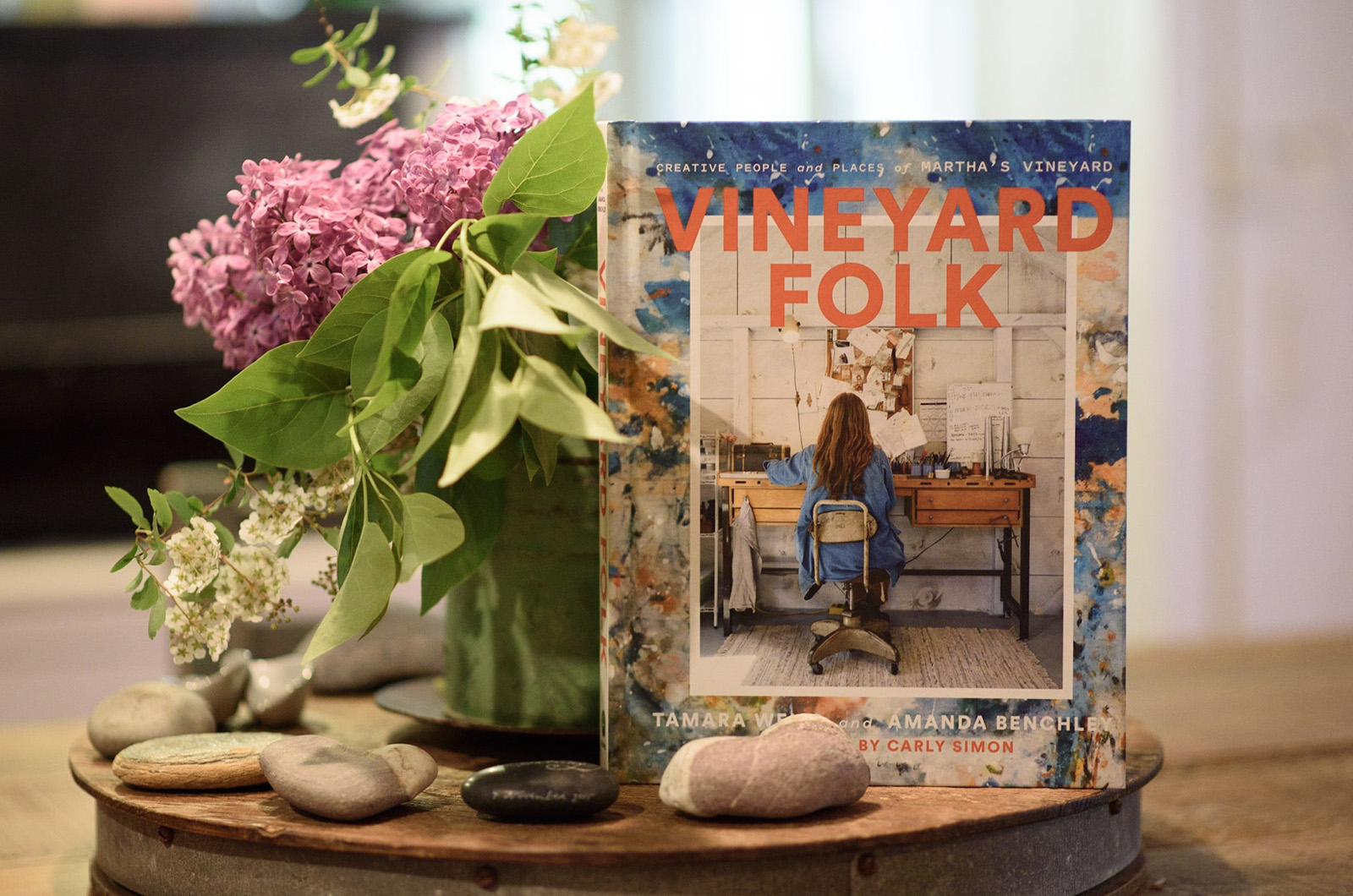When Tamara Weiss and Amanda Benchley set out to write a book about Vineyard artists, they were determined to not just capture the beauty of the Island and its people, but to tell their story.
After dozens of interviews with Vineyard artists, and coordinating hundreds of visuals with photographer Elizabeth Cecil, the pair feel they have done just that. The product of their efforts, Vineyard Folk, hit the shelves last month.
“We decided from the beginning this would not a pretty picture book of people’s houses,” said Ms. Weiss, during an interview at her Chilmark home. “We really needed to tell a particular story about the reality of the moment.”
Ms. Weiss has spent the last two decades engrossing herself in the Island’s arts scene, having moved here year-round in the late '90s after a lifetime of seasonal residency. Soon after landing here full-time, Ms. Weiss opened Midnight Farm, an upscale boutique in Vineyard Haven, with the help of investor Carly Simon. The two are still close friends and Ms. Simon wrote the forward to Vineyard Folk.
Ms. Benchley is the daughter in law of Peter Benchley, the author of Jaws, but is also a relative newcomer to the Island. A New York-based author and journalist, she first visited the Vineyard in 2018. She said she was immediately struck by its vibrant artistic community.
“Because I was coming to this Island sort of brand new, my eyes were really opened, and I had no idea that there were so many pockets of creativity,” she said.
It was during a visit to the Ruel Gallery in Menemsha one evening that the pair, who were friends before Ms. Benchley came to the Island, decided there was room for a book.
“We were standing out on the porch and Amanda looked at me and said, ‘you have so many incredible friends, we should write a book about them,’” Ms. Weiss recalled.
The result was Vineyard Folk, a wide-ranging exploration of Island artist and creatives of various mediums, from the cliffs of Aquinnah to Chappy. In the book, artist interviews are paired with photos by Elizabeth Cecil of their homes and workplaces.
In the process of completing the interviews, Ms. Weiss said she encountered a throughline of adversity for local artists, many of whom are now struggling to find permanent housing on-Island.
“We’re really at risk of losing this community because of development, building and lack of housing,” she explained.
And life on the Island, she notes, is the critical ingredient for each of these artists.
“What characterizes them is their initial passion, love and respect for this this land,” she said. “In all these stories, you can see why they do what they do, and how they get inspired to do what they do by living on this Island.”









Comments
Comment policy »